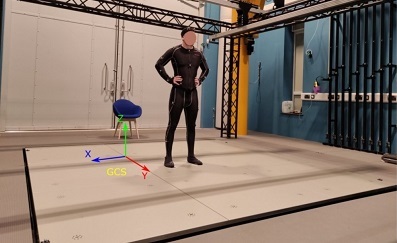First research published by state-of-the-art VSimulators facility
AMTI
We were delighted to hear that the first research paper has been published by the team at VSimulators.
VSimulators is a ‘super force plate’ research facility which can recreate any environment either physically or virtually. The site can immerse up to nine research volunteers in a simultaneous experience, and uses the world’ largest array of AMTI force plates mounted on a 4m x 4m motion platform.
“There’s two key aspects of VSimulators which make it really special”, said Dr Genevieve Williams, Lecturer in Sports Biomechanics, in a 2020 interview. “The first is the nine AMTI force plates mounted on a motion base surrounded by the 8x8m motion capture area, which allows us to have people performing talks such as walking in a relatively free environment while we track their biomechanics and their reaction to the motion platform. The second is the integrated VR headsets and VR environment meaning that we can also control aspects of visual perception in relation to what’s happening on the ground. You can then quantitatively capture movement and different forces as people walk, stand etc around in that environment. That’s really unique.”
You can read the rest of our interview with the visionaries behind the work at VSimulators here.
The research published in December 2022 is entitled “Vector coding reveals the underlying balance control strategies used by humans during translational perturbation.”
“One remarkable mechanism humans display is maintaining upright balance as a bipedal species. Balance control involves the integration of visual, vestibular, and proprioceptive information which informs strategies at the level of muscle activity. External influences such as platform motion can further challenge balance control. This can be experienced daily on moving platforms e.g. floors in moving transport, swaying buildings, etc, due to changes in velocity (acceleration) that affect balance. This work aims to better understand healthy balance control strategies elicited when floor motion representing real-world situations is present.“

